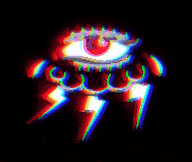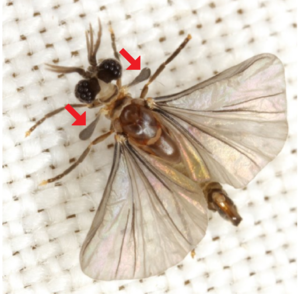Syncytin-2 also known as endogenous retrovirus group frd member 1
Syncytin-2 also known as endogenous retrovirus group FRD member 1 is a protein that in humans is encoded by the ERVFRD-1 gene.[5] This protein plays a key role in the implantation of human embryos in the womb.[6]
This gene is conserved among all primates, with an estimated age of 45 million years. The receptor for this fusogenic env protein is MFSD2. The mouse syncytins are not true orthologues.[7]
The virus, along with some very similar insertions, belong to a group under the Gammaretrovirus-like class I ERVs. Similar ERVs are found in artiodactyls, a result of an independent integration event.[8] A proposed nomenclature suggests putting all such “class I” elements in a genus-level taxon separate from Gammaretrovirus.[9]
References
- ^ Jump up to:a b c GRCh38: Ensembl release 89: ENSG00000244476 – Ensembl, May 2017
- ^ Jump up to:a b c GRCm38: Ensembl release 89: ENSMUSG00000047977 – Ensembl, May 2017
- ^ “Human PubMed Reference:”. National Center for Biotechnology Information, U.S. National Library of Medicine.
- ^ “Mouse PubMed Reference:”. National Center for Biotechnology Information, U.S. National Library of Medicine.
- ^ “Entrez Gene: HERV-FRD HERV-FRD provirus ancestral Env polyprotein”.
- ^ Vargas A, Moreau J, Landry S, LeBellego F, Toufaily C, Rassart E, Lafond J, Barbeau B (2009). “Syncytin-2 plays an important role in the fusion of human trophoblast cells”. Journal of Molecular Biology. 392 (2): 301–18. doi:10.1016/j.jmb.2009.07.025. PMID 19616006.
- ^ Lavialle C, Cornelis G, Dupressoir A, Esnault C, Heidmann O, Vernochet C, Heidmann T (September 2013). “Paleovirology of ‘syncytins’, retroviral env genes exapted for a role in placentation”. Philosophical Transactions of the Royal Society of London. Series B, Biological Sciences. 368 (1626): 20120507. doi:10.1098/rstb.2012.0507. PMC 3758191. PMID 23938756.
- ^ Vargiu, L; Rodriguez-Tomé, P; Sperber, GO; Cadeddu, M; Grandi, N; Blikstad, V; Tramontano, E; Blomberg, J (22 January 2016). “Classification and characterization of human endogenous retroviruses; mosaic forms are common”. Retrovirology. 13: 7. doi:10.1186/s12977-015-0232-y. PMC 4724089. PMID 26800882.
- ^ Gifford, RJ; Blomberg, J; Coffin, JM; Fan, H; Heidmann, T; Mayer, J; Stoye, J; Tristem, M; Johnson, WE (28 August 2018). “Nomenclature for endogenous retrovirus (ERV) loci”. Retrovirology. 15 (1): 59. doi:10.1186/s12977-018-0442-1. PMC 6114882. PMID 30153831.
Further reading
- de Parseval N, Lazar V, Casella JF, Benit L, Heidmann T (October 2003). “Survey of human genes of retroviral origin: identification and transcriptome of the genes with coding capacity for complete envelope proteins”. Journal of Virology. 77 (19): 10414–22. doi:10.1128/JVI.77.19.10414-10422.2003. PMC 228468. PMID 12970426.
- Blaise S, de Parseval N, Bénit L, Heidmann T (October 2003). “Genomewide screening for fusogenic human endogenous retrovirus envelopes identifies syncytin 2, a gene conserved on primate evolution”. Proceedings of the National Academy of Sciences of the United States of America. 100 (22): 13013–8. Bibcode:2003PNAS..10013013B. doi:10.1073/pnas.2132646100. PMC 240736. PMID 14557543.
- Blaise S, Ruggieri A, Dewannieux M, Cosset FL, Heidmann T (January 2004). “Identification of an envelope protein from the FRD family of human endogenous retroviruses (HERV-FRD) conferring infectivity and functional conservation among simians”. Journal of Virology. 78 (2): 1050–4. doi:10.1128/JVI.78.2.1050-1054.2004. PMC 368808. PMID 14694139.
- Renard M, Varela PF, Letzelter C, Duquerroy S, Rey FA, Heidmann T (October 2005). “Crystal structure of a pivotal domain of human syncytin-2, a 40 million years old endogenous retrovirus fusogenic envelope gene captured by primates”. Journal of Molecular Biology. 352 (5): 1029–34. doi:10.1016/j.jmb.2005.07.058. PMID 16140326.
- Malassiné A, Blaise S, Handschuh K, Lalucque H, Dupressoir A, Evain-Brion D, Heidmann T (2007). “Expression of the fusogenic HERV-FRD Env glycoprotein (syncytin 2) in human placenta is restricted to villous cytotrophoblastic cells”. Placenta. 28 (2–3): 185–91. doi:10.1016/j.placenta.2006.03.001. PMID 16714059.




